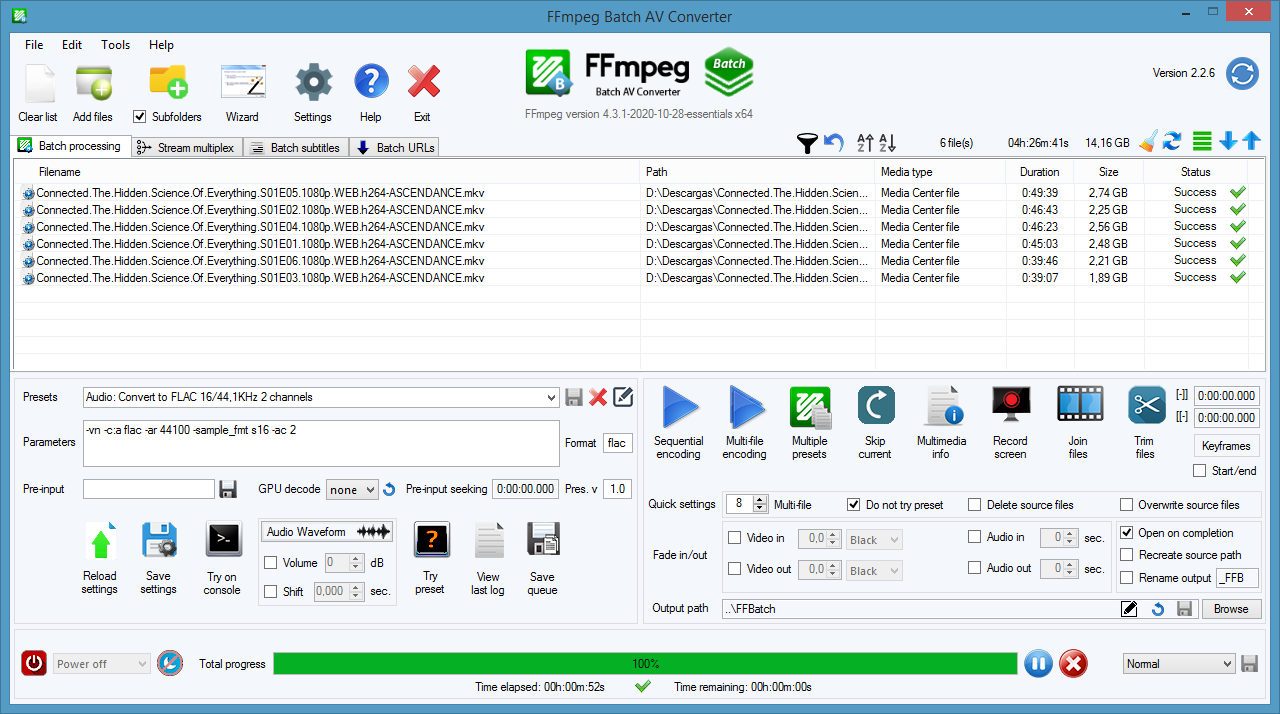

The link for the batch file used for this guide is provided above. The long help file contains about 7,000 lines, which provides a hint as to how many commands are available. When printed to text, the help file sizes are: 5kB for the basic, 25kB for the full, and 487kB for the long help files. Here are links to the basic help file: ffmpeg_help and the full help file: ffmpeg_help_full. To view the commands available in the help files, click the ff-prompt.bat file in the root directory to open a command window or open your own in the bin folder and type in one of the following commands: ffmpeg -h - print basic optionsįfmpeg -h full - print all options (including all format and codec specific options, very long FFmpeg Help FilesįFmpeg provides three levels of help files: basic, long, and full. Only ffmpeg.exe and ffmprobe.exe are used in this guide. Note that there are a number of commands that are common between the three tools. ffmprobe.exe – a command-line tool to analyze and display media information.ffmpeg.exe – a command-line encoder and media converter.The FFmpeg package contains the following three main executable tools in the bin folder:

Simply download the latest 32 or 64-bit static build from the builds page here and extract it to a folder (builds are compressed in 7z format). The FFmpeg version used for this guide is a Windows complied version availiable from CODEX FFMPEG. While the above example is simple, FFmpeg commands can also be more complex. To demonstrate how easy it can be, provides this example command for converting input.mp4 to output.avi on its homepage: $ ffmpeg -i input.mp4 output.avi Although FFmpeg includes over 100 codecs and a mind-boggling number of possible combined command-line options, it’s not that difficult to use.

FFmpeg is compatible with a large number of SW applications and it’s used in many popular SW products such as VLC Media Player, YouTube, and Handbrake. It has since become one of the best-known and most widely used products of its type. First developed under Linux, compiled versions are available for most operating systems and platforms. This guide is related to a previous post for concatenating audio files also with a batch file, but with using a different set of command-line tools for joining them.įFmpeg is an open-source and cross-platform command-line set of SW programs for recording, converting and streaming audio and video. A tested example batch file is provided to help illustrate. This guide demonstrates how to automate concatenating two or more audio files of the same format using FFmpeg while preserving the metadata in the merged file.


 0 kommentar(er)
0 kommentar(er)
